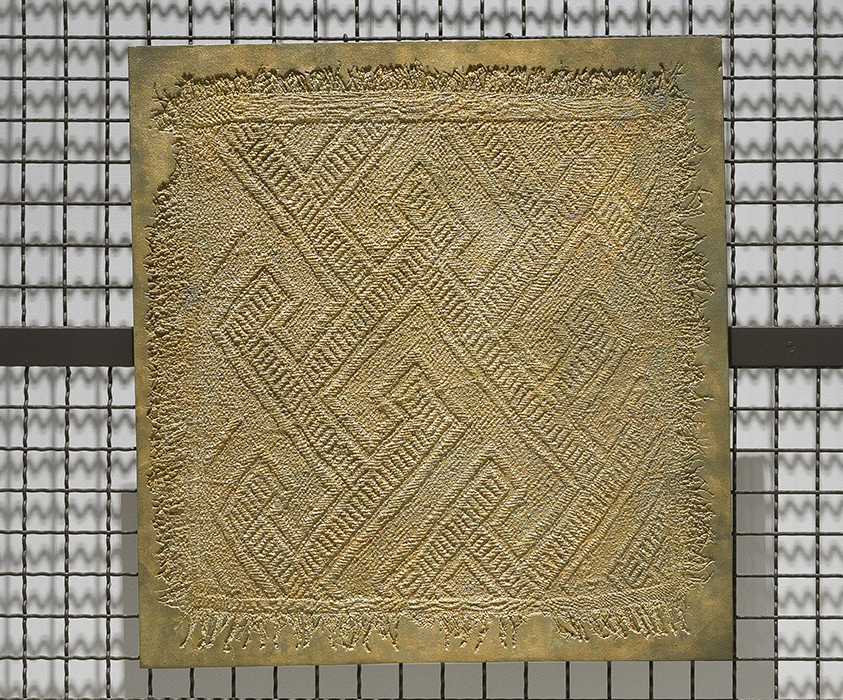Fragments of Interlaced Dialogues, 2017 – … Copper Negative of Luxury Cloth, Kongo Peoples; Democratic Republic of the Congo, Republic of the Congo or Angola, Seventeenth-Eighteenth Century (fig. 18)
Description:
Sammy Baloji (Lubumbashi, 1978; lives and works between Lubumbashi and Brussels) is a multidisciplinary artist whose practice for years has involved investigating the precolonial heritage of the Kingdom of Kongo (1395-1914), an empire that covered much of present-day Angola, the Republic of Congo, and the Democratic Republic of Congo. The ethnographic collections assembled from the late 19th century by archaeologist Luigi Pigorini and inherited by the Museum of Civilizations contain a number of ivory hunting horns and raffia textiles that first reached Rome around 1518 when Pope Leo X ordained Henrique, son of Afonso I, King of Kongo and the first bishop of Central Africa in the history of the Church.
In his series Copper Negatives of Luxury Clothes (2016-on- going) Sammy Baloji has attempted to historicize the pre-colonial relationships between Europe and Africa by transforming into bronze plaques these two raffia fabrics from the Museum of Civilizations collections. The video Of the Moon and the Velvet shows the elaborate imaging and 3D printing process used by the artist for creating these two sculptures. On the one hand, these plaques are an attempt to monumentalize the handicraft techniques of the Kongo Kingdom that were lost in the brutal practices of slavery that exploded with the rise in Atlantic trade and culminated with Belgian colonization. On the other, Baloji’s choice to replicate these objects in a copper and tin alloy underscores the exploitation of mining in the Kongo by Western metallurgical industries. Abstract geometry fabric patterns evoke the electronic components of batteries made today using coltan extracted through child labor. These formal representations intend to short-circuit the intricate web of the West’s past and present extractionism in the Kongo regions. ML

